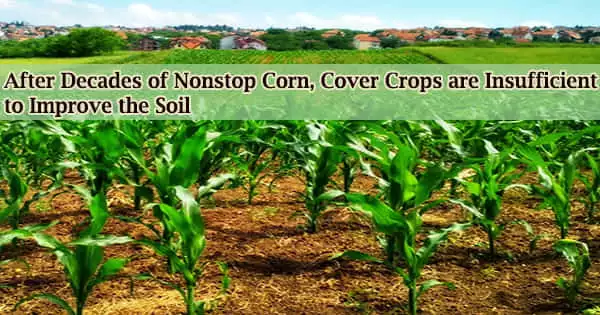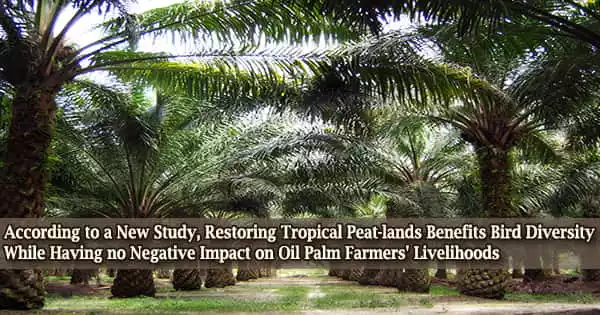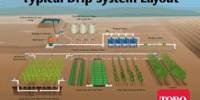Even though continuous corn is planted in around 20% of Illinois cropping systems, it is quite difficult to locate areas that have been this way for many years at a time. However, long-term studies, such as one conducted at the University of Illinois and involving almost 40 years of continuous maize grown at various nitrogen fertilizer rates, offer tremendous chances for learning and valuable advice on soil management for both scientists and farmers.
This is especially true for research on the soil microbiome, such as two studies performed by Nakian Kim, a Ph.D. graduate from the Department of Crop Sciences at the University of Illinois. The long-term experiment, backed by a USDA-NIFA grant to Mara Villamil’s team, gave Kim a special, biologically stable setting to investigate baselines and examine microbial responses to the inclusion of cover crops.
Importantly, Kim discovered that using cover crops only temporarily cannot reverse decades of soil microbial dynamics brought on by ongoing maize cultivation and intensive nitrogen fertilizer use.
“In the Midwest, our soils are healthy and resilient, but we shouldn’t overestimate them. A soil under unsustainable practices for too long might reach an irreversible threshold,” Kim says.
At a far higher taxonomic resolution than earlier research, Kim described changes in microbial communities in his first study, which was published in the journal Agronomy. A more in-depth look at the microbial population revealed indicator genera that are crucial to the health and function of the soil.
“Most studies have looked at the microbes very generally, at the phylum level. But even a single phylum may have incredibly vast microbial diversity. Analysis at such levels could not provide insights with enough details, so I looked deeper,” Kim says. “Genus-level responses or stasis can tell us how a soil and its microbial community are responding to soil management practices.”
Our Midwestern soils are resilient in ways that we might not have anticipated. Closer scrutiny reveals microbial communities are reacting dynamically to unsustainable practices and adapting to the resulting soil conditions. Reverting these changes may take tremendous effort and time, and cover cropping should be one of many strategies we deploy to increase the spatial and temporal diversity of our agricultural systems to protect our soils and our future on this planet.
Professor Mara Villamil
For instance, he discovered that both long-term fertilization and cover crops encouraged the growth of bacteria that raised the possibility of nitrous oxide emissions. In the meantime, cover crops also increased soil biodiversity because they were linked to bacteria that occupied a wider range of niches and roles. Details like these, in particular the fact that cover crops can affect soil bacteria in both good and negative ways, may have been overlooked in earlier, more comprehensive microbial assessments.
Instead of defining the bacteria themselves, Kim’s second study, which was published in Frontiers in Microbiology, concentrated on nitrogen cycling by finding microbial functional genes in soil.
“Applying a lot of nitrogen fertilizers definitely disrupted nitrogen cycling communities,” Kim says. “Ammonia-oxidizing archaea decreased significantly with fertilization, but bacteria were not that responsive. Within denitrification communities, those harboring the nitrate-reducing nirK gene were not as sensitive, while others with the nirS gene were negatively affected.”
Kim discovered that the potential nitrification and denitrification rates of microbes indirect markers of nitrate leaching and nitrous oxide emission were unaffected by two years of cover crops.
“If a system is exposed to disruption of nitrogen-cycling microbial communities long enough, it may develop resistance to conservation practices,” Kim says.
In other words, 36 years of continuous maize and nitrogen fertilizer application may not have been sufficient to undo the damage, even with two years of cover cropping. Kim, however, is eager to investigate the outcomes of longer-term cover crop management.
Villamil, professor in the Department of Crop Sciences and co-author on both papers, says, “Our Midwestern soils are resilient in ways that we might not have anticipated. Closer scrutiny reveals microbial communities are reacting dynamically to unsustainable practices and adapting to the resulting soil conditions. Reverting these changes may take tremendous effort and time, and cover cropping should be one of many strategies we deploy to increase the spatial and temporal diversity of our agricultural systems to protect our soils and our future on this planet.”
















